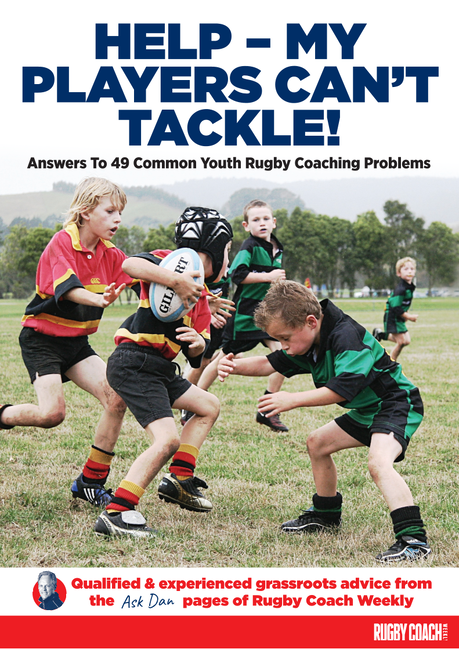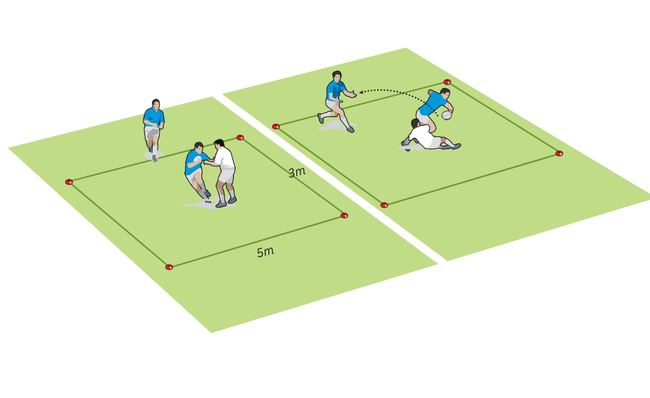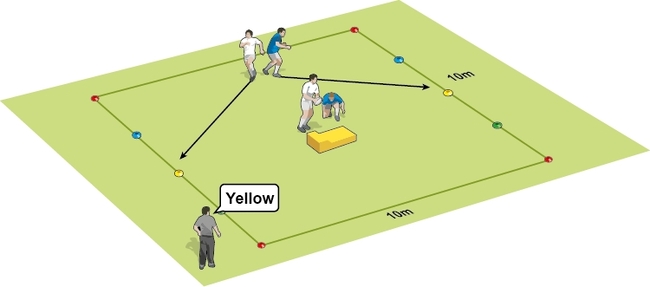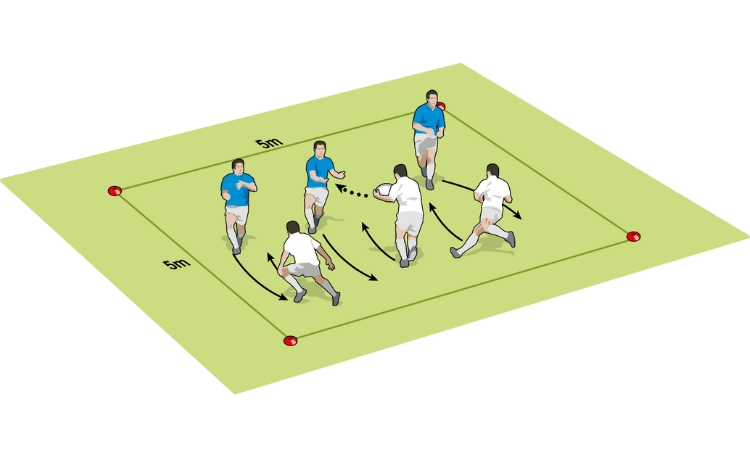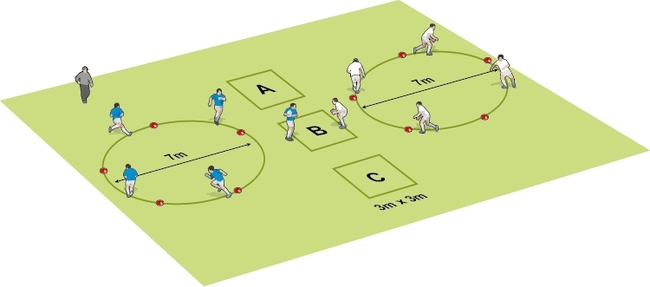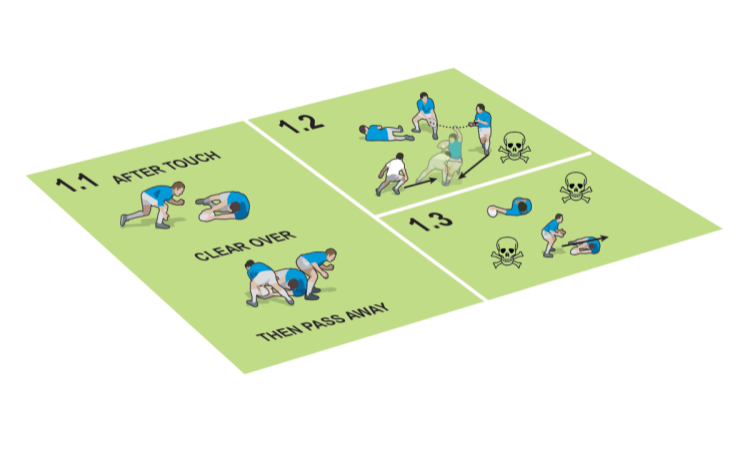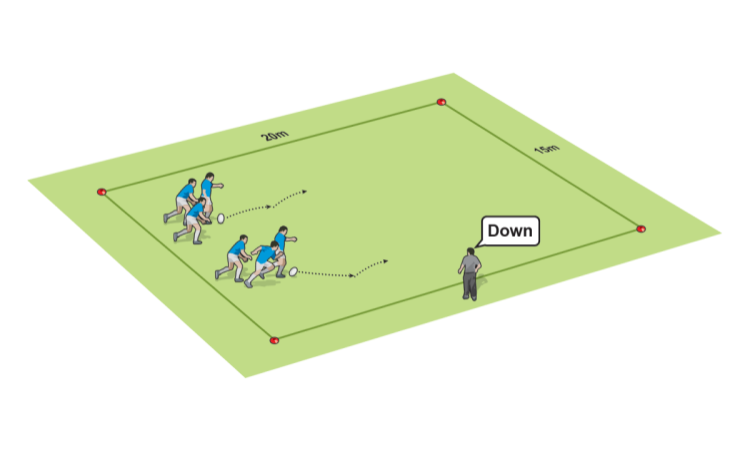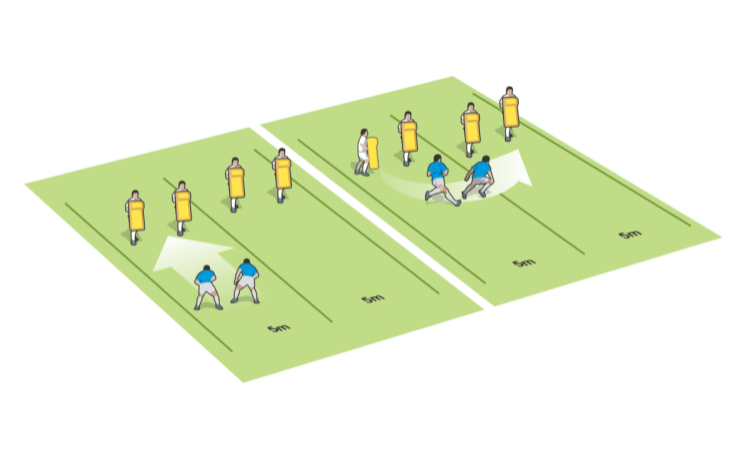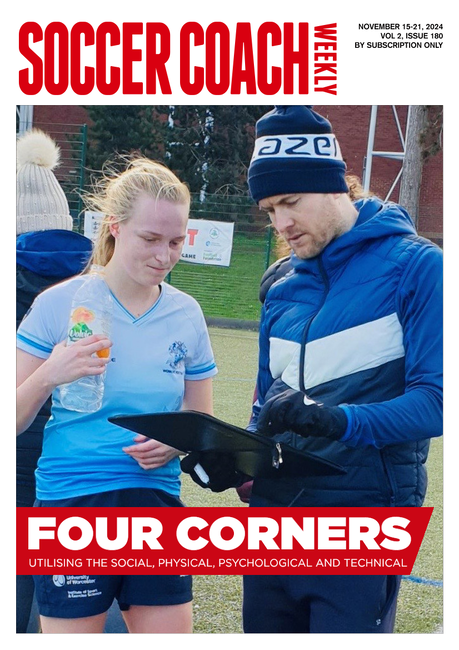Tips for rugby rucking with tackle bags and shields
However, tackle bags can also lead players to develop poor technique since they are static and don’t resist like opponents.
Better practices challenge the players. For example, place the bags at awkward heights, or provide specific targets.
If there are letters on the bag, tell the players to target their shoulder to hit them. This means they are looking for the point of contact rather than just hitting.
Place two bags one foot apart to encourage players to hit the bags with both shoulders and also keep their heads up, the head going through the gap.
Put the bags almost touching the ground. The players then need to get themselves as low as possible to clear the bags. They will need to get the shoulders above hips on every hit, but cannot afford to be lazy about arriving too high.
Try having a support player behind each bag or shield holder. In which case, the rucker has to hit the bag with the right technique to drive the bag holder and their support backwards.
Specialist ruckers
In this era of the multifaceted player, with props who are as adept with a 20-metre spin pass off their left hand as scrummaging, there remains room for the ruck specialist. The role is simply to clear out rucks, by driving opposition players away.
To adopt this tactic, designate four or five forwards as “ruck clearers”.
During the game, they line themselves up behind a ball carrier. If that player is stopped, they protect the ball by either standing over the tackled player or driving off the opposition players who are challenging for the ball.
These players do not:
Stand out in the back line awaiting the ball.
Take pop balls from the scrum half.
These players might:
Receive an offload from the ball carrier.
Support a pick and go.
Pros:
The forwards have a fixed role in open play – “ruck clearer” or ball carrier – and become a specialist in this. They then know where to run and have to make fewer decisions on the field. The team becomes more adept at rucking as well as ball carrying.
Cons:
Such specialisation does not enable the individual player to develop in the long run. For the normal weekend player, it could be very boring to just clear out rucks. They may see the ball occasionally, though not as a specific runner, but by being on the shoulder of the ball carrier.
This article is from The Ruck and How to Win It.
Premium Books
Newsletter Sign Up
Coaches Testimonials

Gerald Kearney, Downtown Las Vegas Soccer Club

Paul Butler, Florida, USA

Rick Shields, Springboro, USA

Tony Green, Pierrefonds Titans, Quebec, Canada
Subscribe Today
Be a more effective, more successful rugby coach
In a recent survey 89% of subscribers said Rugby Coach Weekly makes them more confident, 91% said Rugby Coach Weekly makes them a more effective coach and 93% said Rugby Coach Weekly makes them more inspired.
Get Weekly Inspiration
All the latest techniques and approaches
Rugby Coach Weekly offers proven and easy to use rugby drills, coaching sessions, practice plans, small-sided games, warm-ups, training tips and advice.
We've been at the cutting edge of rugby coaching since we launched in 2005, creating resources for the grassroots youth coach, following best practice from around the world and insights from the professional game.




